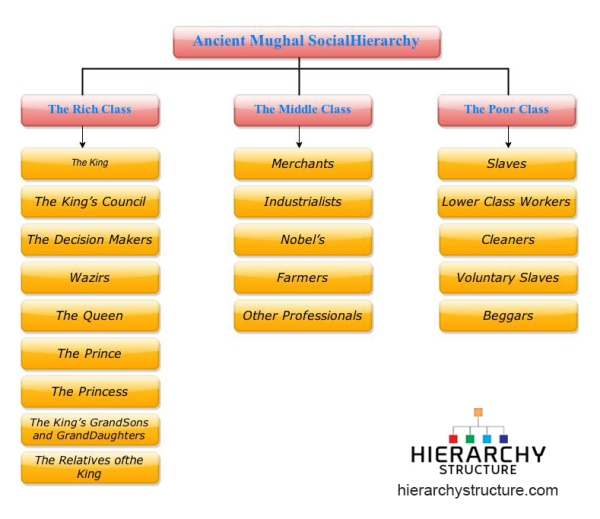The Mughal Empire was an empire which extended over large areas of the Indian subcontinent and ruled over the Indians for many decades. Agra was the capital of the Mughal Empire whereas Persian was the main language spoken by the people.
The Mughals were known for their rules, governance and dynasty. Like every other society or culture, there was a social hierarchy of tree of order followed among the Mughals and ancient Mughals as well. According to this social hierarchy, the society was divided into several segments or parts, each with its own importance, responsibilities, reputation and functions. Let’s know about Ancient Mughal social hierarchy in detail:
 The Rich Class
The Rich Class
At the top of the pyramid of the Ancient Mughal social hierarchy was the rich class that lived a lavish life and had everything that they wanted. It was this class who ruled over the Indian subcontinent and made rules, policies and laws. They had all the luxuries they needed and were headed by the King or the emperor. The King was the one who took the final decisions, headed over the people and was the supreme power.
- the king
- the king’s council
- the decision makers
- wazirs
- the queen
- the prince
- the princess
- the king’s grandsons and granddaughters
- the relatives of the king
The Middle class
The next in line in the pyramid of the social hierarchy of ancient Mughals was the middle class or the class of the nobles who had high paying jobs and lived a comfortable lifestyle. They worked hard in the day and spent during the other parts of the day. They often owned their own land and worked for the king in some way or the other. The following is the hierarchy of this particular class:
- Merchants
- Industrialists
- Nobel’s
- Farmers
- Other professionals
The Poor Class
The next class which fell at the bottommost of the pyramid was the poor class which was the class that didn’t own any of their own land, had no wealth or luxuries. They often worked for the middle class or at lower positions within the kingdom. They sometimes went without food and had to work for long hours to pass each day. The poor class in the days of the Mughal Empire was mostly voluntary slaves as they often worked without any pay and lived on the mercy of the middle or upper class.
- Slaves
- Lower class workers
- Cleaners
- Voluntary slaves
- Beggars
Know about Ancient hierarchy
